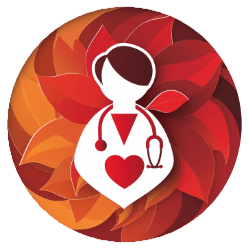In the high-stakes world of healthcare, the pressure can sometimes feel as though you're carrying the weight of the world on your shoulders. It's no secret that your days are often long and unpredictable, leaving little room for personal time or relaxation. However, finding a moment to breathe—literally—can be your secret weapon in combating stress and rejuvenating your mental and emotional wellbeing.
You've likely heard about the benefits of breathing techniques, but you may not know just how transformative they can be in the context of healthcare. From the calming rhythm of alternate nostril breathing to the soothing vibrations of the humming bee breath, these practices offer a lifeline in the tumultuous sea of healthcare demands. They're not just quick fixes but gateways to a more balanced, focused state of mind.
Imagine being able to harness your breath to navigate through the toughest days with a sense of calm and clarity. Let's explore how these five breathing techniques can become integral tools in your stress relief arsenal, promising a path to a calmer, more centered you amidst the chaos.
Key Takeaways
- Deep breathing lowers stress levels and promotes calm in healthcare.
- Focused Breath Technique enhances calm, mindfulness, and breath control.
- Equal Breathing Practice harmonizes body and mind through balanced inhalations and exhalations.
- Progressive Muscle Relaxation releases physical tension and deepens sense of calm.
Deep Breathing Essentials
Deep breathing, a fundamental yet powerful tool, can significantly lower your stress levels, especially in the demanding environment of healthcare. When you're constantly addressing the needs of others, taking a moment for deep breaths can be a sanctuary of calm in a storm.
This practice, also known as diaphragmatic breathing, belly breathing, or abdominal breathing, encourages full oxygen exchange and can lead to feeling less stressed.
To start, find a quiet space. Focus on your breathing pattern: breathe in deeply through your nose, letting your belly rise more than your chest. This is the essence of diaphragmatic breathing. Hold that breath momentarily, then breathe out slowly through your mouth, feeling the release of tension. Each cycle of breath focus serves as a bridge back to a state of equilibrium and calm.
Incorporating these Relaxation Techniques: Breath Control into your daily routine can transform moments of overwhelm into opportunities for resilience. Remember, it's not just about taking deep breaths; it's about cultivating a rhythm that sustains you through your shifts.
Focused Breath Technique
You'll find the Focused Breath Technique to be a simple yet profoundly effective method for easing stress and enhancing your sense of calm. This technique, rooted in deep breathing exercises, allows you to take control of your breath and, consequently, your state of mind. By directing your attention to your breath—slowly through your nose, letting your belly fill with air, and out through your nose—you engage in a practice that helps ground and relax you.
Here's what makes the Focused Breath Technique stand out:
- It promotes relaxation and mindfulness.
- Encourages full, deep breaths.
- Increases awareness of the present moment.
- Enhances breath control.
- It's adaptable to your needs.
- Can be practiced anywhere, anytime.
- Easily combined with other breathing exercises for comprehensive stress relief.
- Intensity can be adjusted for comfort.
- It offers significant benefits.
- Helps reduce anxiety and increases energy levels.
- Aids in stress relief, promoting a sense of calm.
- Improves overall well-being when incorporated regularly into your routine.
Dedicated to those who strive to serve others, incorporating the Focused Breath Technique into your daily life not only helps you manage stress but also improves your ability to care for those around you with greater presence and calm.
Equal Breathing Practice
Shifting our focus to the Equal Breathing Practice, you'll discover a technique that harmonizes your body and mind by balancing your inhalations and exhalations. This simple breathing method, rooted in ancient traditions, has found its place in modern health care for its effectiveness in reducing stress.
Equal Breathing, or Sama Vritti, involves matching the length of your breath in and out, creating a rhythm that helps focus your mind and relax your body. Here's a quick guide:
| Step | Action | Focus Word/Phrase |
|---|---|---|
| 1 | Sit or lie comfortably | "Prepare" |
| 2 | Inhale through the nose for 4 counts | "Inhale peace" |
| 3 | Exhale through the nose for 4 counts | "Exhale stress" |
| 4 | Repeat for several minutes | "Balance" |
| 5 | Gradually increase counts as comfortable | "Expand" |
Breathing Techniques for Stress, like Equal Breathing, empower you to take control of your breath, and thereby your health. By engaging in breath control, you're not just relaxing; you're nurturing your ability to serve others with a calmer, more focused mind. Embrace these moments of peace, allowing them to be a foundation for the compassionate care you provide every day.
Progressive Muscle Relaxation
While Equal Breathing offers a foundation in breath control for stress relief, exploring Progressive Muscle Relaxation introduces a complementary technique, focusing on releasing physical tension through mindful muscle engagement and relaxation. In healthcare, where you're constantly serving others, finding moments for your own peace and relaxation is crucial. This technique can be a beacon of calm in a sea of demands.
- Progressive Muscle Relaxation: A Guide
- Begin by finding a comfortable position, lying down if possible.
- *Tense and Relax*: Start with your feet, tense the muscles as you breathe in deeply, then release the tension as you exhale.
- Move progressively through different muscle groups—legs, abdomen, arms, shoulders, and face.
- *Reflect on the Sensation*: After completing the cycle, take a moment to reflect on the sense of relaxation.
- *Regular Practice*: Integrate this practice into your daily routine to deepen the sense of calm and stress relief.
Modified Lion's Breath
Have you ever imagined unleashing your inner lion to combat stress? Modified Lion's Breath is a type of breathing that allows you to do just that. By sitting comfortably and exhaling with a 'HA' sound, you not only open your mouth to release tension but also breathe deeply, pushing past shallow breaths that often accompany high levels of stress.
This technique encourages you to visualize yourself as a mighty lion. As you exhale forcefully, you're not just expelling air; you're releasing the pent-up stress that can so often overwhelm those who dedicate their lives to serving others. It's about taking control, ensuring that Control Helps Quell Errant feelings of being overwhelmed.
Incorporating Modified Lion's Breath into your daily routine can help you feel less tied down by the burdens of your day. By adjusting the intensity of your exhalation to suit your comfort level, this breathing helps you manage stress on your terms. It's a way to remind yourself that you have the power to moderate how you feel, helping you feel more in command and less at the mercy of external pressures.
Frequently Asked Questions
What Is the 4-7-8 Breathing Method for Stress?
Ironically, the answer you're seeking isn't just a deep breath away—it's a structured method. The 4-7-8 breathing technique's a simple yet powerful way to calm your nerves and serve others with a clear, focused mind.
What Are the Techniques for Stress Relieving?
To relieve stress, you've got options like mindfulness, exercise, journaling, and creative arts. They help you reflect, serve others better, and manage stress effectively. It's about finding what resonates and works for you.
What Are the 5 Deep Breathing Relaxation Steps?
You're seeking to master deep breathing for relaxation. Start by finding a comfortable seat. Breathe in deeply through your nose, hold it, then exhale slowly through the mouth. Repeat this cycle five times, focusing on calmness.
What Are Breathing Techniques for Stress Study?
As they say, "A calm mind is a healthy mind." You'll find breathing techniques like deep breathing and breath focus invaluable for studying. They'll help you center, reducing stress and enhancing focus and retention.





